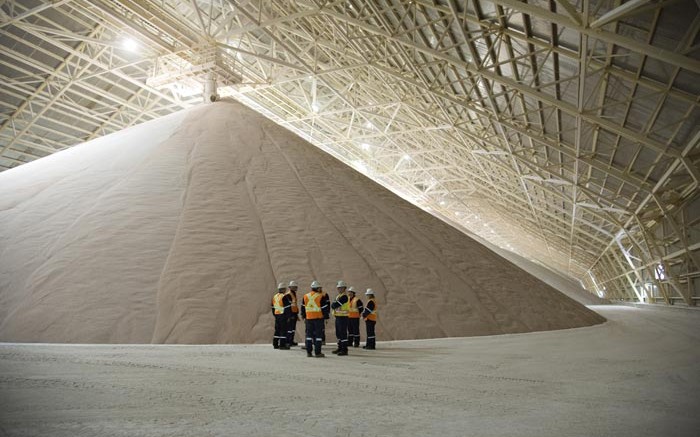Potash Corp. of Saskatchewan (TSX: POT; NYSE: POT) is lowering its potash production levels in response to weaker demand and fertilizer prices for the second half of 2015.
The Saskatoon-based fertilizer giant will permanently close its Penobsquis mine in New Brunswick by the end of November, and plans a three-week shutdown in December at three of its Saskatchewan mines — Cory, Allan and Lanigan.
PotashCorp has two nearby potash operations in New Brunswick: the old, high-cost Penobsquis mine and the new, low-cost Picadilly mine. “The plan had been to phase out the Penobsquis operation over time, beginning next year. But with the current market conditions, the company decided it would be better to close it now and accelerate the ramp-up at Picadilly,” Randy Burton, PotashCorp’s director of public relations and communications, says in an interview.
“While this will reduce available production levels in New Brunswick by 800,000 tonnes annually, until we have Piccadilly fully ramped up, it aligns with market conditions, as we expect it will help improve our overall costs,” Jochen Tilk, PotashCorp’s CEO, commented on a recent earnings call.
Burton adds that the production levels in New Brunswick should “climb back to current levels in 2017.”
Meanwhile, the one-time shutdowns at Cory, Allan and Lanigan should lower inventories, given the softer demand, Burton says. “Our general corporate approach is to match supply to demand. And so those mines are going to take a break.”
These breaks, coupled with the Penobsquis closure, should lower PotashCorp’s fourth-quarter production by nearly 500,000 tonnes, but no layoffs are expected.
Elsewhere in Saskatchewan, the producer is expanding its Rocanville potash mine, where it is converting the service headframe to a production headframe. Rocanville cash costs per tonne are estimated at US$40 to US$45 per tonne.
“With the Penobsquis shutdown and Rocanville ramp-up in 2016, potash cost per tonne is expected to be lower year-over-year,” CIBC analyst Jacob Bout writes in a note.
PotashCorp, which produces potash, nitrogen and phosphate, reported third-quarter earnings of US34¢ per share, slightly missing analysts’ estimates of US37¢ per share.
Gross margins fell 14% year-over-year to US$505 million, mainly due to weaker nitrogen and phosphate contributions of US$161 million and US$50 million.
The potash segment generated US$294 million in gross margin, relatively flat from a year ago. Shipments came in at 2.2 million tonnes, including offshore shipments of 1.5 million. The cost of goods sold fell 14% to US$113 per tonne, partly offsetting the 11% year-over-year drop in the average realized potash price of US$250 per tonne.
Macroeconomic headwinds — including lower gross domestic product growth in emerging markets and the stronger U.S. dollar relative to other currencies — helped weaken the global fertilizer environment, Tilk noted on the call.
The company has kept its 2015 global potash shipment expectations at 58 million to 60 million tonnes. But to reflect the weaker volumes and pricing, it has trimmed its full-year potash sales volume guidance by 5% to 9.2 million tonnes. It expects a potash gross margin of US$1.5 million, and a combined nitrogen and phosphate gross margin of US$1.1 billion, both slightly reduced from previous estimates.
As result, full-year earnings per share should come in at US$1.55 to US$1.65, down from US$1.75 to US$1.95.
“While we see some short-term pain associated with potash shutdowns, the longer-term benefit is a potash price above the marginal costs of production,” Bout said. He rates the stock as a “sector outperformer,” with a $28 price target.
Meanwhile, Raymond James analyst Steve Hanson has cut his US$25 target to US$23 per share to reflect “the persistent macro challenges weighing on global potash fundamentals.” He rates the stock as “market perform.”


Be the first to comment on "PotashCorp cuts supply to match demand"